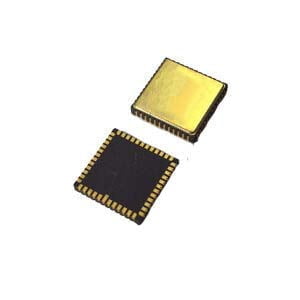Current Type Dual-Axis Tilt Sensor
Introduction
ER-TS-4258CU Current Type Biaxial Tilt Sensor is a small volume MEMS biaxial current output tilt sensor, output current 4~20mA, 0~20mA, 0~24mA optional. Due to the built-in micro-electromechanical production process inclination device, the product is small in size, low in power consumption, industrial-grade working temperature is -40~+85℃, and long-distance transmission can reach more than 2500 meters. The strong ability to resist external electromagnetic interference makes it suitable for long-term work in harsh industrial environments.
The product adopts the principle of non-contact measurement, can output the current attitude inclination in real time, the accuracy can reach 0.1°. The product is simple to use and does not need to find the relative change of two surface installation, which is the ideal choice of industrial equipment and platform measurement.
Features
Biaxial tilt monitoring
Full range accuracy 0.1°, resolution 0.01°
Output 4~20mA, 0~20mA optional
Wide voltage input DC 9~36V
Wide temperature working -40~+85℃
Range:0~±90°(selectable)
High vibration resistance>3500 g
IP67 protection level
RS232 can be output simultaneously, RS485 customizable
Volume (90*40*27mm) (customizable)
Applications
Railway gauge
Satellite solar antenna positioning
Tractor, deep tillage machinery
Mining machinery, oil logging equipment
Medical equipment
Hydraulic lifting platform
Tilt based monitoring
Various construction machinery angle control
Inspection of bridges and dams
Specifications
| Parameter | Condition | ER-TS-4258CU-10 | ER-TS-4258CU-30 | ER-TS-4258CU-60 | ER-TS-4258CU-90 | Unit |
| Measuring range | / | ±10 | ±30 | ±60 | ±90 | ° |
| Measurement of shaft | / | X, Y Axis | X, Y Axis | X, Y Axis | X, Y Axis | / |
| Zero temperature drift | -40~85° | ±0.01 | ±0.01 | ±0.01 | ±0.01 | °/℃ |
| Sensitivity temperature coefficient | -40~85° | ≤150 | ≤150 | ≤150 | ≤150 | ppm/℃ |
| Zero offset | The output of 0° | 4~20 output 12mA, 0~20mA output 10mA, 0~24mA output 12mA | mA | |||
| Frequency response | DC response | 100 | 100 | 100 | 100 | Hz |
| Resolution | Bandwidth 5Hz | 0.01 | 0.01 | 0.01 | 0.01 | ° |
| Precision | -40~85℃ | 0.1 | 0.1 | 0.1 | 0.1 | ° |
| Long-term stability | -40~85℃ | <0.12 | ° | |||
| Power on start time | / | 0.2 | 0.2 | 0.2 | 0.2 | s |
| The response time | / | 0.01 | 0.01 | 0.01 | 0.01 | s |
| Average working time | ≥55,000 hours/time | |||||
| Output mode | 4~20mA, 0~20mA, 0~24mA selectable | |||||
| Impact resistant | 3500g, 0.5ms, 3 times/shaft | |||||
| Shock resistant | 10grms, 10~1000Hz | |||||
| Insulation resistance | ≥100 mΩ | |||||
| Waterproof level | IP67 | |||||
| Cable | Standard 1.5 m length, wear resistance, oil proof, wide temperature, shielding cable 6*0.3mm² | |||||
| Weight | 145g (excluding boxes) | |||||
Application Techniques
1.The Difference between Tilt Sensor and Gyro Sensor
3.How to install the tilt sensor?
4.What are Tilt Switches and Tilt Sensors?
5.How to Use the Tilt Sensor and How to Install It?
6.Do you Know the Working Principle of Inclinometer ?
More Products









